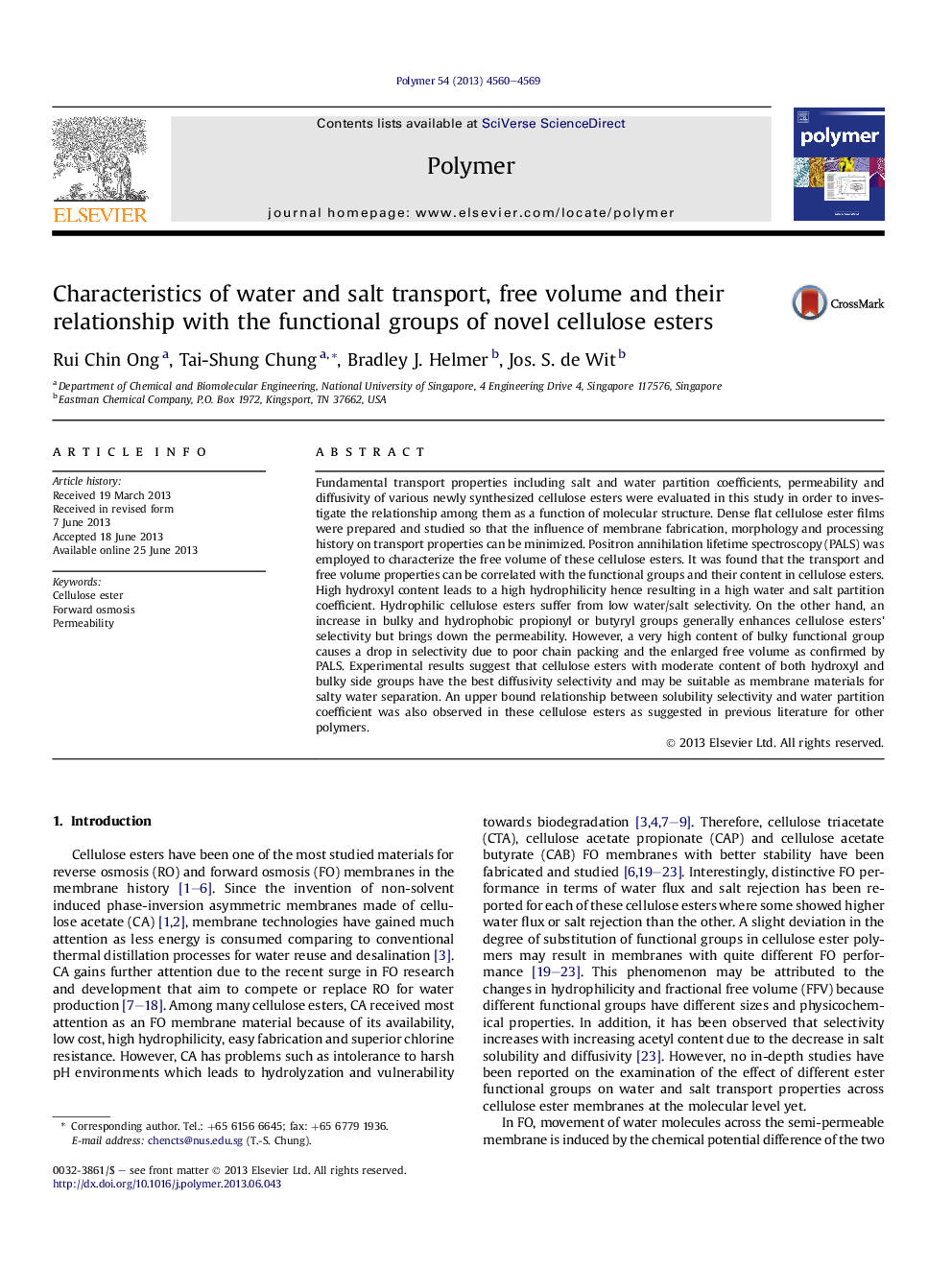| Article ID | Journal | Published Year | Pages | File Type |
|---|---|---|---|---|
| 5181792 | Polymer | 2013 | 10 Pages |
Fundamental transport properties including salt and water partition coefficients, permeability and diffusivity of various newly synthesized cellulose esters were evaluated in this study in order to investigate the relationship among them as a function of molecular structure. Dense flat cellulose ester films were prepared and studied so that the influence of membrane fabrication, morphology and processing history on transport properties can be minimized. Positron annihilation lifetime spectroscopy (PALS) was employed to characterize the free volume of these cellulose esters. It was found that the transport and free volume properties can be correlated with the functional groups and their content in cellulose esters. High hydroxyl content leads to a high hydrophilicity hence resulting in a high water and salt partition coefficient. Hydrophilic cellulose esters suffer from low water/salt selectivity. On the other hand, an increase in bulky and hydrophobic propionyl or butyryl groups generally enhances cellulose esters' selectivity but brings down the permeability. However, a very high content of bulky functional group causes a drop in selectivity due to poor chain packing and the enlarged free volume as confirmed by PALS. Experimental results suggest that cellulose esters with moderate content of both hydroxyl and bulky side groups have the best diffusivity selectivity and may be suitable as membrane materials for salty water separation. An upper bound relationship between solubility selectivity and water partition coefficient was also observed in these cellulose esters as suggested in previous literature for other polymers.
Graphical abstractDownload full-size image
